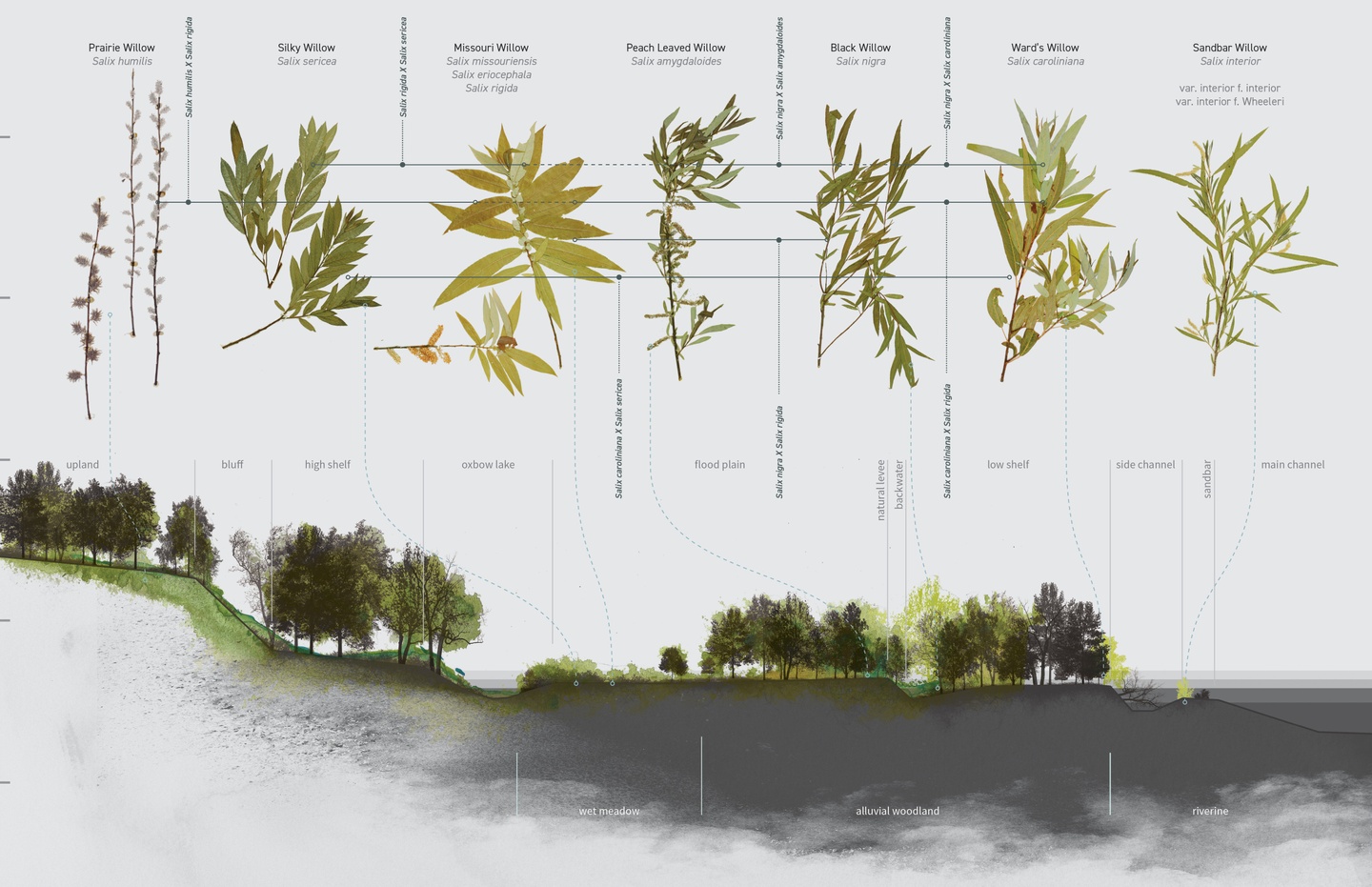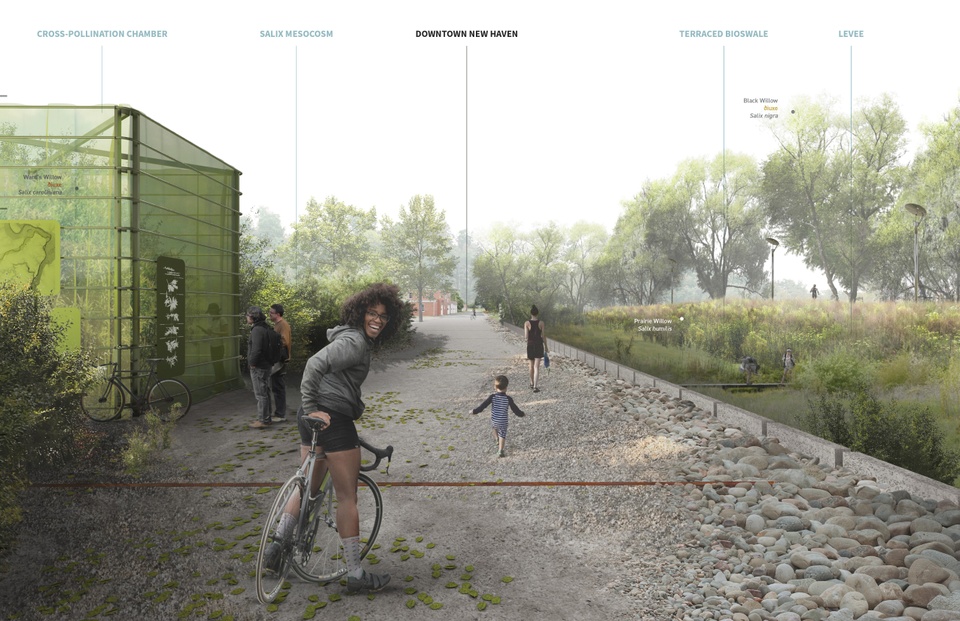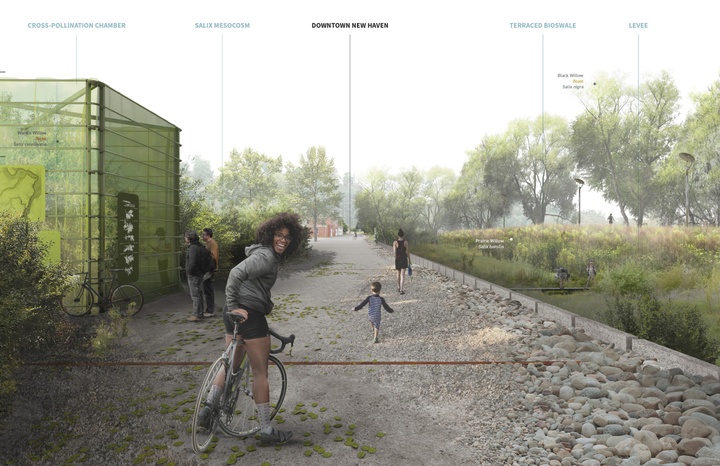2021 ASLA Student Awards
2021-10-08 • Liam Otten

The Willow Resiliency Project, John Whitaker.
Weicong Huang and John Whitaker from the Master of Landscape Architecture program in the Sam Fox School of Design & Visual Arts at Washington University in St. Louis, have won national honors from the American Society of Landscape Architects (ASLA).
Huang, a master’s candidate in landscape architecture and in urban design, received an Honor Award in Analysis and Planning for The Death and Life of Great American Barges. The project explores how a vast network of levees, locks and dams has impacted the ecology of the Mississippi River Basin—and how the river’s existing system of barge traffic might be deployed to transport trapped sediment and restore damaged wetlands.
Whitaker, a lecturer in landscape architecture as well as a 2020 alum, received the Award of Excellence in General Design for his Willow Resiliency Project, which proposes a biomass industry cooperative between rural communities and repatriated indigenous populations of the Lower Missouri River Valley.
This marks Whitaker’s second ASLA Award of Excellence. In 2020, he received the honor for Dark Matter, a research-by-design thesis that investigated organic reduction (composting) of human remains as a means of promoting biological and cultural diversity in human cemeteries. Earlier this year, Huang and Whitaker both received student awards from the ASLA St. Louis Chapter and from The Council of Educators in Landscape Architecture.
Founded in 1899, ASLA is the professional association for landscape architects in the United States, representing more than 15,000 members. An awards presentation will be held as part of the group’s annual conference November 19-22. Recipients also will be featured in the ASLA’s Landscape Architecture Magazine.
The Willow Resiliency Project
Project by John Whitaker, Associate ASLA
Award of Excellence in General Design
Faculty Advisors: Rod Barnett; Micah Stanek, ASLA
Simplicity is the strength of this project that brings together ecological restoration with rural and indigenous communities. The solutions being shown are simple; we can see this being an actual project that could be implemented, and the story is evocative and grounded in feasibility with a realistic way of thinking of indigenous and non-indigenous cultures. This is a great example of rethinking how we do industry within the Green New Deal.
The Death and Life of Great American Barges
Project by Weicong Huang
Honor Award in Analysis & Planning
Faculty Advisor: Derek Hoeferlin
This project revives the old Mississippi River barge system to revitalize America’s great river, tapping into a ubiquitous, historical object to address the economic and ecological future of a region. There have been many studies of the river that we’ve seen before, but none in this type of detail. The proposal is intriguing and ecological, portraying innovation and smart analysis.



















